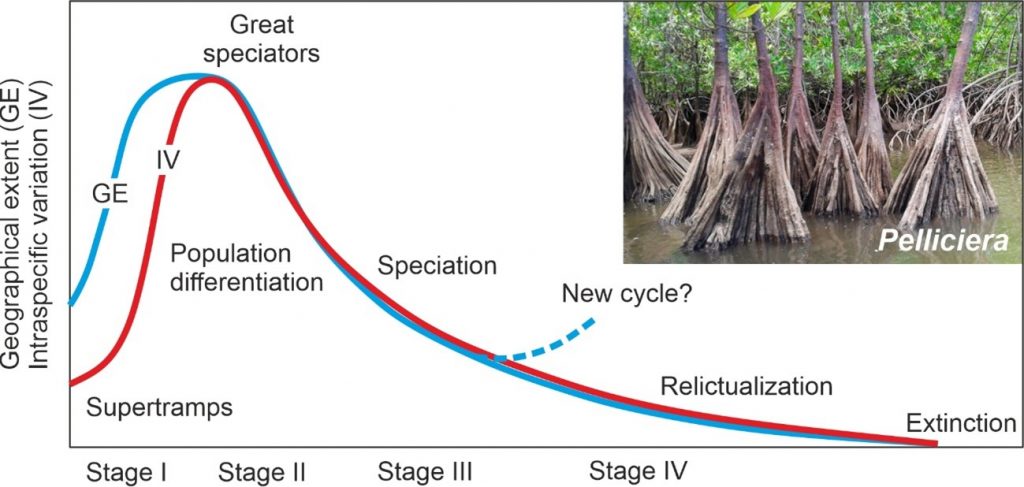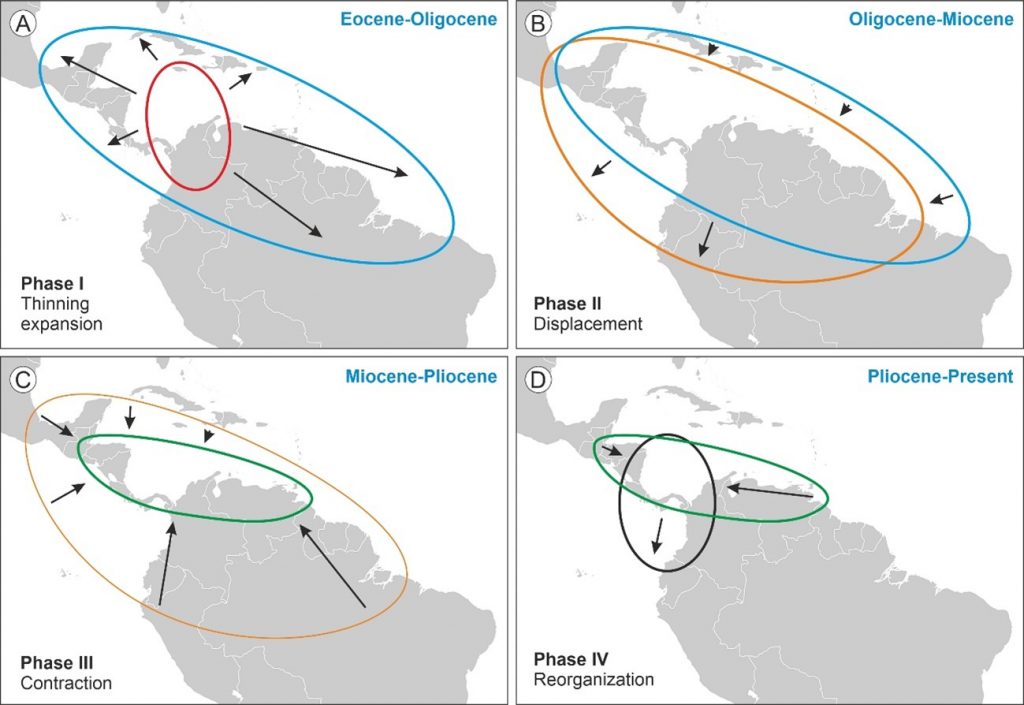The Pelliciera taxon cycle
- A taxon cycle involves successive range expansions and contractions over time, through which a species can indefinitely maintain its core distribution. Otherwise, it becomes extinct.
- A recent study shows that he tea mangrove, a Neotropical tree restricted to a small relictual equatorial patch, is the first case of a taxon cycle known for plants.
The concept of the taxon cycle was developed six decades ago by Edward O. Wilson and consists of four stages: (I) range expansion with low differentiation; (II) increasing diversification; III) geographical stasis, fragmentation and vicariance; and (IV) relictualization and extinction. Taxon cycles have been described mainly for tropical insular faunas and no examples from plants are known to date. Most of these studies have been based molecular phylogenetic inferences and straighforward empirical evidence from the fossil record is lacking.

Pelliciera (Tetrameristaceae) originated in the southern Caribbean coasts during Eocene and was the first mangrove-forming tree known from the Neotropics (Rull, 2022). Presently, this tree is endemic to a small area around the Panama isthmus but was of wide neotropical distribution during the Miocene. According to a recent study (Rull, 2023), the biogeographical shifts of this tree are consistent with he concept of a taxon cycle, as defined by E. O. Wilson.

The tea mangrove originated in the southern Caribbean coasts in the Lutetian (~50 Ma) and radipdly expanded during the Oligocene, attaining a widespread Neotropical distribution in the Miocene. This expansion was characterized by population reduction and fragmentation (thining) within the canpoy of the dominant mangrove tree Rhizophora (red mangrove), an eurytopic taxon that provided the microhabitat needed for the survival of the stenotypic Pelliciera (facilitation). Population fragmentation was due to local extinction and favored incipient speciation.
Range contraction initiated in the Pliocene, when Pelliciera was restricted again to the southern Caribbean, likely due to the global cooling that preceded the Quaternary glaciations. The present relictual range, which rouhgly concides with the Eocene original distribution, was attained during the Pleistocene. These long-term biogeographical trends suggest that the tea mangrove is faced to natural extinction, a process that might be accelerated by the increasing anthropogenic pressure. Pelliciera is the only case of a taxon cycle documented using fossil evidence, in this case pollen, and the first example known for plants.
References:
Rull, V. 2022. The Caribbean mangroves: an Ecene innovation with no Cretaceous precursors. Earth-Science Reviews 231, 104070.
Rull, V. 2023. Taxon cycles in Neotropical mangroves. Plants 12, 244.














